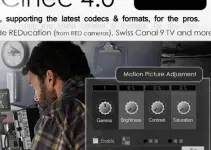Oftentimes, fixing white balance in post could be a serious struggle but since it’s an essential step of the overall color grading process, you simply don’t have any other option than figuring it out in one way or another. The good news is that there are multiple ways you can approach this task, especially if you’ve already picked out DaVinci Resolve 12.5 as your primary color grading application.
Considering the powerful tools and assets the platform provides, pulling this off shouldn’t be an issue as long as you know the ins and outs of your craft. But, if you are still not sure where to start, here are a few excellent tips and tricks that will walk you trough the process and help you sort things out along the line.
As Casey Faris suggests in the video tutorial above, you should start off by picking up a neutral color in your image such as true white or gray and then trying to find its visual representation in the Scopes. The RGB Parade can be extremely effective in that regard as it allows you to evaluate the overall RGB balance of the footage you’re working with.
For instance, if there is an obvious offset in one particular channel, you’ll be able to instantly spot it just in a single glimpse. What’s more, this tool will not only help you to define the brightest and darkest areas of your image but also will allow you to balance out the RGB channels and get a neutral image with just a couple of clicks.
Once you find the area on the individual scopes that represents that particular color, you can use it as a reference to adjust its values and make them equal across all of the three color channels. To do so, use the Gain control just as shown in the example below. If required, bump up the contrast and saturation of the image to facilitate the process and take it a step further.
Another thing to remember is that balancing your blacks is just as important as getting your highlights right. If you are not able to see clearly your blacks on the scope in the first place, try to boost up the Lift a little bit. Then pick another area of the image that’s supposed to be pure black and balance it out in the same way as you’ve just done with your highlights, but this time use the Lift Color Wheel instead.
Long story short, by picking neutral colors in the highlights and shadow areas of your image and then balancing them across all channels of the RGB Parade scope, you’ll be able to fix virtually any color cast with ease. Unlike most badly calibrated monitors, the RGB scope will give you a lot more accurate measurements that will help you to get your images balanced correctly every time you come across a video with unbalanced colors that are significantly skewed or at radically different levels.
[source: Casey Faris]
Disclaimer: As an Amazon Associate partner and participant in B&H and Adorama Affiliate programmes, we earn a small comission from each purchase made through the affiliate links listed above at no additional cost to you.




